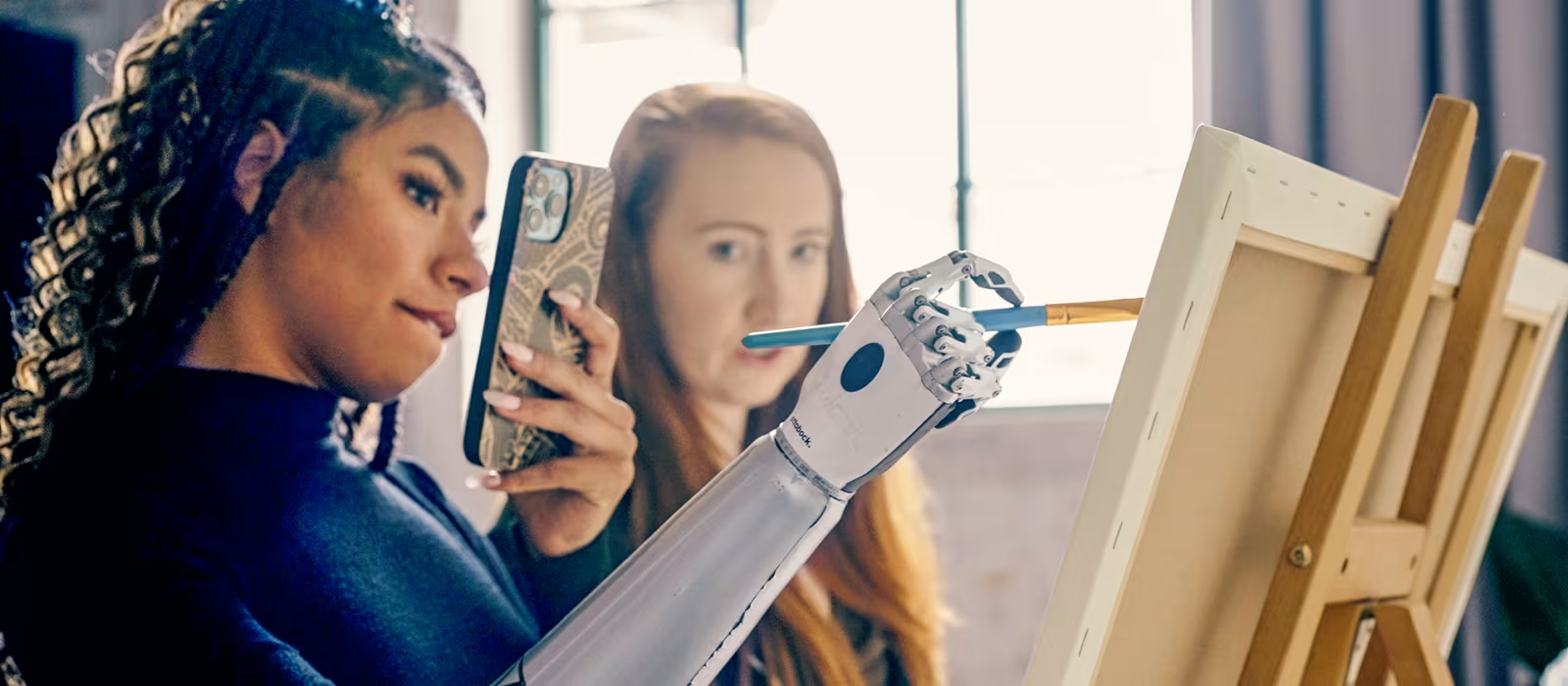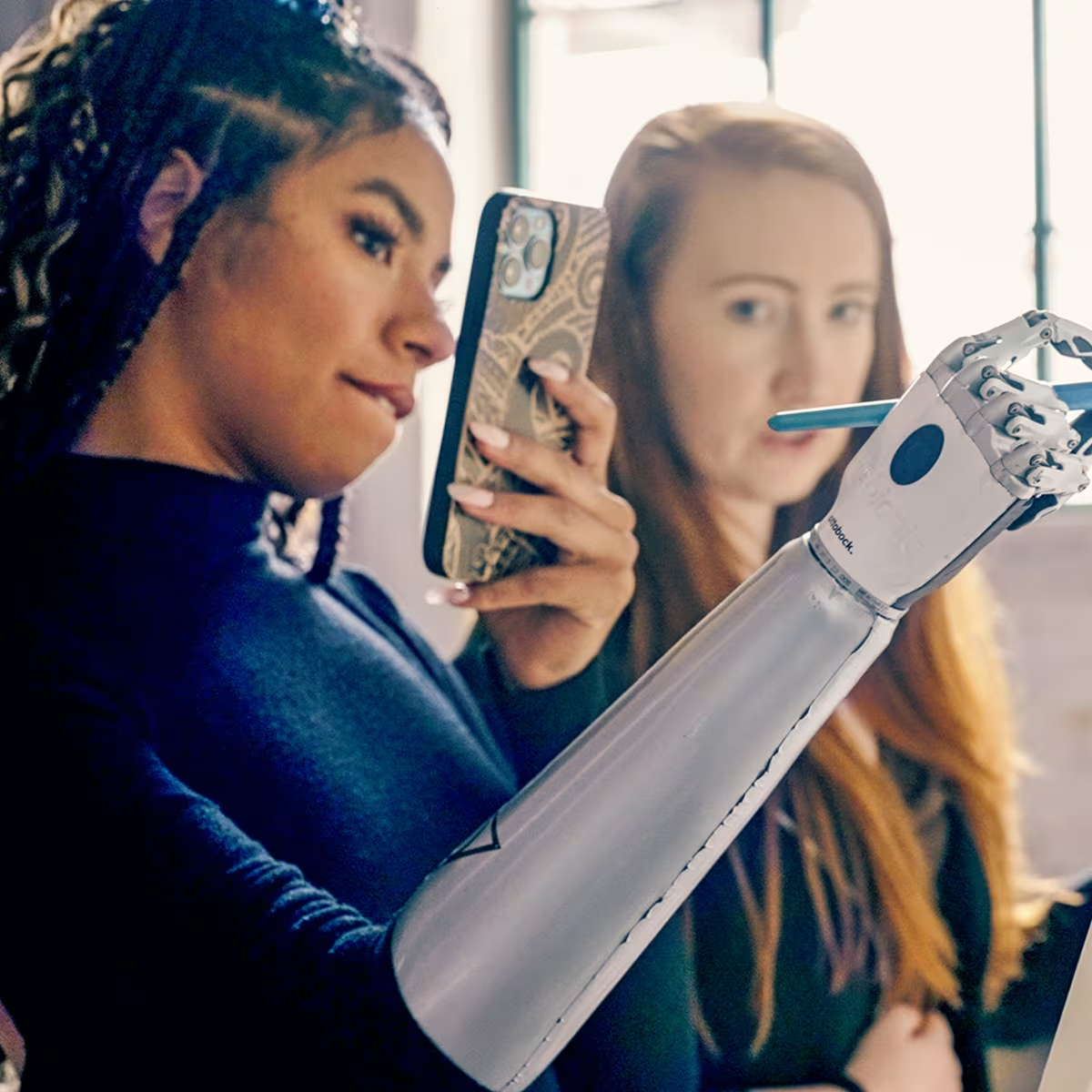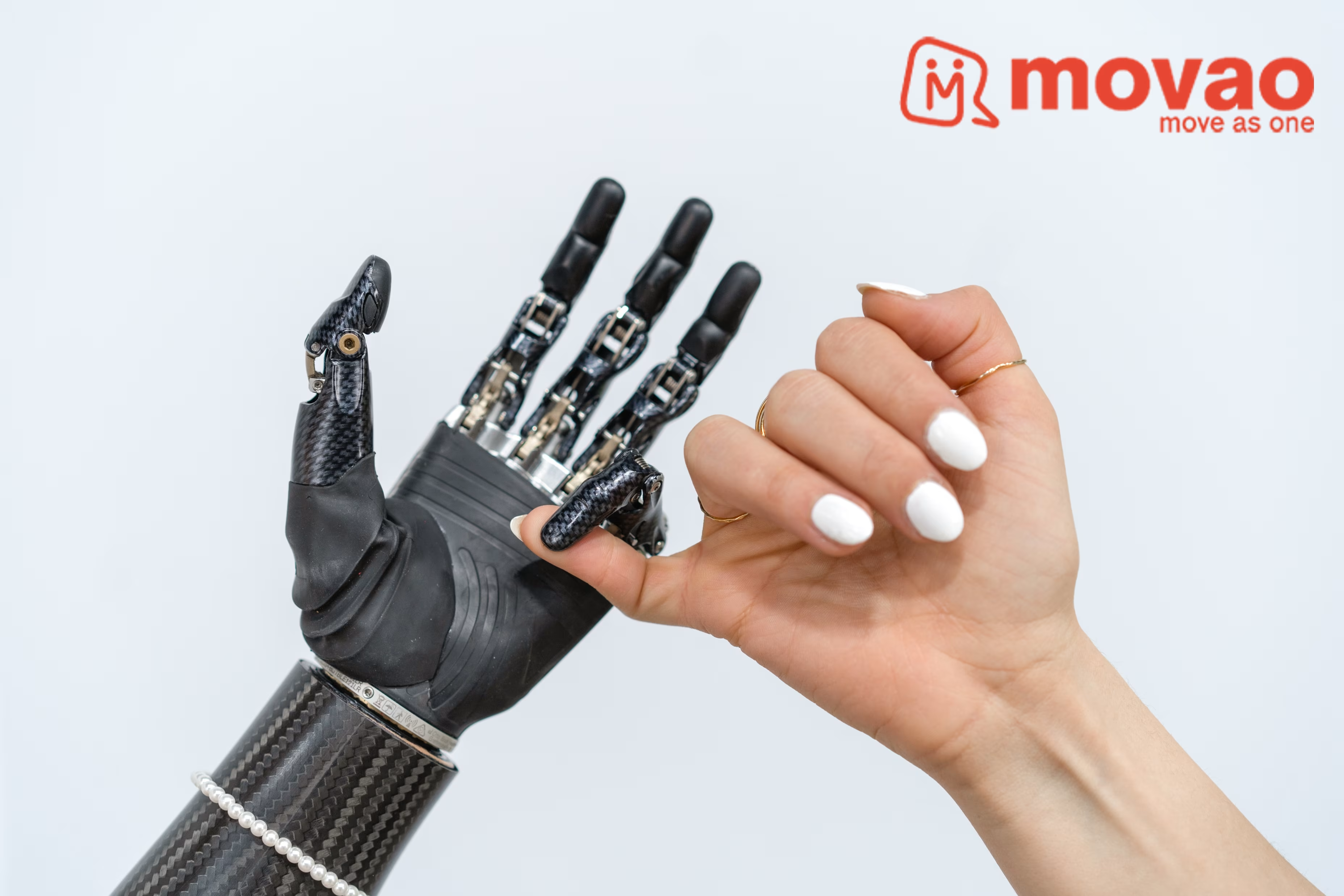


Prosthetic arms and hands
Explore the different types, and all the ways these special devices can empower people at home, at work, and throughout their daily life.
Explore the different types, and all the ways these special devices can empower people at home, at work, and throughout their daily life.
What they are and how they work
Prosthetic arms and hands are devices designed to support users who are missing part of a hand or arm. They can be used by individuals who have lost a limb due to an injury, accident, or illness, and also by people who have a limb difference due to a congenital condition.
Sometimes called “upper limb prostheses,” these devices come in many forms: from simple and natural-looking "passive" hands to high-tech "bionic” hands that mimic many different hand movements. Keep reading to understand the various types of prosthetic hands, how they work, and how they support a wide range of daily activities.
What a prosthetic arm or hand can do for you
While prosthetic arms and hands cannot fully replace a natural limb, they can support users in many different and valuable ways. The right device can help restore someone’s independence and mobility, help them master everyday tasks, get back to their job, or simply help them look and feel normal.
People use these capable tools for many reasons. Some prosthetic arms and hands come with special features, like grippers and hooks, that can assist with specific tasks. More advanced devices are often designed to look and move more like the human hand.
In addition to physical support, these devices can also support users emotionally and psychologically, helping users adapt to life after limb loss, rebuild their confidence, and improve their self-esteem.
Three main kinds of prosthetic arms and hands
These devices typically come in three different forms: cosmetic or “passive” devices, body-powered devices, and myoelectric devices. Each type of device has its own unique functions and abilities.
All three types can support users in different ways, depending on the user’s needs, their goals and activities, and the size, shape, and location of their residual limb. The right choice for each user can depend on all these factors, and many others that a certified professional prosthetist (O&P professional) can help explain.
Cosmetic prosthetic arms and hands
Designed to provide a natural-looking appearance, this type of prosthesis is popular with users who want their device to look as natural and “normal” as possible. Cosmetic prostheses can be built to match each person’s skin tone, gender, and physical characteristics, making them as realistic-looking as possible.
Unlike other types of prostheses, though, cosmetic prostheses usually do not offer hand-like functionality. They’re typically designed to look like a normal hand, not function like one.
Despite this limitation, many people with limb differences find that wearing a cosmetic prosthetic helps them feel more comfortable and confident in social situations.

Body-powered prosthetic arms and hands
This common type of prosthetic device gives people the ability to control their replacement by making specific movements with their shoulders, chest, or residual limb. This type of prosthetic typically uses cables, pulleys, and a specialized harness to operate the prosthetic hand or arm.
These prostheses are known for their durability and strength, making them suitable for grasping and lifting objects and handling other heavy-duty everyday activities.
While they may require more physical effort to operate than some prostheses, body-powered devices also provide a cost-effective option for users who want a simple, reliable, and sturdy prosthetic limb.

Myoelectric prosthetic hands
These devices are the most advanced and versatile prosthetic hands available today. Sometimes called “bionic” hands, myoelectric prostheses are controlled by the user’s own muscle signals and powered by a battery. Electrodes on the skin of their residual limb can pick up nerve impulses from the user’s muscles and use them to control the motors in the prosthetic hand.
Myoelectric hands offer precise and versatile control over a wide range of finger movements and grip patterns, making it easy to perform many different activities. These high-tech prostheses are also functional and stylish, showcasing cutting-edge prosthetic technology while supporting important everyday activities.
Ottobock offers several different myoelectric prostheses, including bebionic, Michelangelo, and MyoHand VariPlus Speed. Each has its own unique functionality and cutting-edge design.


bebionic
The most lifelike, multi-articulating bebionic hand works intuitively and precisely in ways that are transforming the lives and abilities of amputees around the world.
The most lifelike, multi-articulating bebionic hand works intuitively and precisely in ways that are transforming the lives and abilities of amputees around the world.

Michelangelo
Lightweight, powerful, and fast, the Michelangelo hand aims to restore numerous functions of the natural hand in a sophisticated and intelligent design.
Lightweight, powerful, and fast, the Michelangelo hand aims to restore numerous functions of the natural hand in a sophisticated and intelligent design.

MyoHand VariPlus Speed
The VariPlus Sensor Hand combines a quick-disconnect wrist with the mechanical characteristics of the SensorHand Speed and the control of the System Electric Greifer DMC VariPlus.
The VariPlus Sensor Hand combines a quick-disconnect wrist with the mechanical characteristics of the SensorHand Speed and the control of the System Electric Greifer DMC VariPlus.
More information on prosthetic arms and hands
Ready to keep exploring? Discover the inspiration, community, and products you need for life with a prosthetic device.

Life with a bionic hand
Learn tips and tricks from Ottobock prosthetic hand users and share your own stories and life hacks.
Learn tips and tricks from Ottobock prosthetic hand users and share your own stories and life hacks.

Living with an arm amputation
Learn about different arm amputations, how to take care of prostheses and residual limbs, and more.
Learn about different arm amputations, how to take care of prostheses and residual limbs, and more.

Find community with Movao
Connect locally and globally with amputees and their loved ones to learn about similar interests and challenges.
Connect locally and globally with amputees and their loved ones to learn about similar interests and challenges.
Subscribe to the Ottobock newsletter
Stay in the loop on all things orthotics and prostheses, new product releases, and motivational insights.


